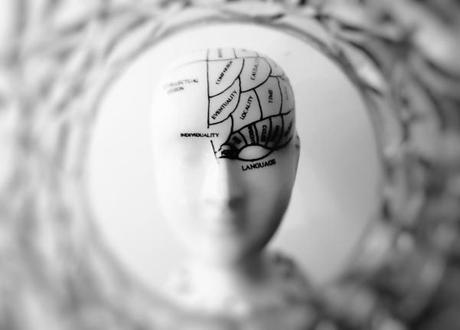
Tags

In the past I was weary of those what seemed seductive but harmful thought and emotions so I decided it was time to learn techniques to actively re-programme my thoughts and resultant emotions. You can too.
This is possible as our personality is not cast in stone from our childhood; the brain is reprogrammable at any age.
Neuroplasticity is the brain's ability to form new neural pathways, interconnections between parts of our nervous system. This happens after injury but also in response to our environment, thoughts and emotions.
As with building muscle, the more we "work out" certain neural pathways, the stronger they become and these robust pathways become our psychological "choices." We can generate more happiness, calm and kindness in our life simply by practicing these choices.
Throughout our lives, our brain has used this technique to programme negative emotions in order, or so it thought, for our survival, so, we can do the same for patience, love, passion and joy.
How many of you know something intellectually but fail to apply it? You know jealousy will push your partner away, but do you get angry when they talk to the opposite sex for too long, anyway.
When judgment or negativity comes up, it means your internal dialogue is off, you have moved into your ego state and are acting out on your old learned behaviours.
Thankfully there is a simple fix. Your subconscious mind works more through feeling than language and therefore your thought, it is the key to your motivation and therefore your actions. By creating a strong emotion, we create a direct line to the operating instructions of your subconscious.
Here are five methods you can use to train yourself to think and feel anything:
Tony Robbins says motion is created by emotion. A change in your physical "state" will change how you feel. This year (2017) I attended his Unleash the Power Within seminar and learned about priming, which harnesses this principle.
Here's how it works:
In the resulting state, you can easily plant healthy new thoughts and beliefs in your mind.
Have something in mind before you begin and try it out.
2. The Demartini MethodHuman behaviour specialist Dr. John Demartini also uses neuroplasticity to re-programme the brain. He asks his clients a series of questions to help them neutralise negative emotional charges and replace them with emotional equilibrium.
His method alters several structures of the brain, including the hypothalamus and amygdala, which are responsible for expressions of fear, guilt and aggression.
How does it work? When facing a challenging situation, Gibson says, "Question the situation itself and ask what good comes from it. " Look for the benefits, because there's always at least one.
I will give you an example that Eric Edmeades discusses in one of his videos.
He was returning from a trip and stopped off to get some things at a shop and when he returned to his car all of the equipment, he had taken on the trip had been stolen. This included laptops and mobile phones. Initially he was incredibly angry, as you would be, but after a short time he started to think about all the benefits he would gain without these things. He thought about how his quality of time would change and how he could prioritise his relationships without a phone or computer, all the activities he didn't find the time to do he loved because of the time he spent on these items that had been stolen. He said the next few weeks were some of the most enjoyable he had had in a long time and all because he reframed this experience to get some positive from it. And after all he had insurance and everything material was replaced.
Another example may be that one of your enormous strengths, which you value so greatly, comes from a parent abandoning you as a child, but does your inner dialogue ever let you see the positive side of this? Seeing the good can help you drop unhelpful beliefs quite quickly just by re-evaluation of your story.
3. Positive Emotional AffirmationsOver time we can become set in our ways as repetitive thinking leads to stronger connections between neurons, and the brain defaults to these deeper pathways. We can get 'stuck in a rut'. But there is hope as it is possible to be the architect of our own metamorphosis using positive affirmations: phrases repeated often and daily with an attached emotion.
Our subconscious is the factory that generates many of our thoughts, positive and negative, and can be reprogrammed with strong emotion and repetition. Affirmations lodge new operating instructions into your subconscious the same way that listening to a song on repeat will leave it stuck in your head for days. And how much more powerful is this song if it elicits an emotion within you.
Tony Robbins bridges the gap between repetition and emotion. He calls them "incantations" rather than affirmations and are done with explosive emotion and conviction to really hit home in a powerful way.
If your affirmation is " I am a persuasive speaker," then your incantation would be the same words, shouted while beating your chest and jumping around. The idea here, upheld by the science of neuroplasticity, is that our brains are more susceptible to reprogramming under conditions of heightened emotion.
4. VisualisationVisualisation works like affirmations to rewire our neurons and attract the thoughts and feelings we want.
Vividly imagining yourself doing or having whatever you want works well for quickly getting your dream job, house or relationship, but it can also work for attracting healthy emotions. If you consistently visualise yourself reacting to challenges with calm, compassion, love, enthusiasm, confidence you will manifest this behaviour.
Take time every day to visualise yourself having the emotional resilience or the positive beliefs that you want as with even five minutes of daily practice, you will start to see powerful change.
5. Mindfulness MeditationI trained in Mindfulness Meditation and with 10 minutes daily, I have been able to see my otherwise unobserved thoughts for what they are: as passing things, not to dwell on or hold onto. This technique uses the breath as the only constant, and our thoughts and emotions just as fleeting parts of lives that will arrive and leave on a constant basis. By being in these rather than them just being there you can then choose to breathe them in and let them out of your body. Letting go of what is not useful and using what is useful to your advantage.
This helps me understand, work through and to put aside lots of negative emotion s, some however will return and it is important that I continue to manage these in a healthy way.
I see this like a stream of emotions, I used to think of it as a river, but this sometimes felt overwhelming, again the emotional meaning I gave to a thought. I can now either watch or be in the flow as these thoughts and emotions come in and out of my mind and body, and go to a place of my choosing.
Meditation helps me to let go in the moment, using all of the above, or a selection, in harmony, I am letting go of the old and creating new and concrete ways of managing and changing my life. You can do the same, but be patient, you have taken a lifetime to wear in your neural grooves. Consistent practice is the way to form and wear in your new ones.
I have also written my first book, The P.E.O.P.L.E. Programme which will help you to understand why you think, feel and act the way that you do. Once you have realised this then the book will also show you how to improve any aspect of your life by just making a few simple changes.
This post was contributed by John Kenny
JohnKennyCoaching
